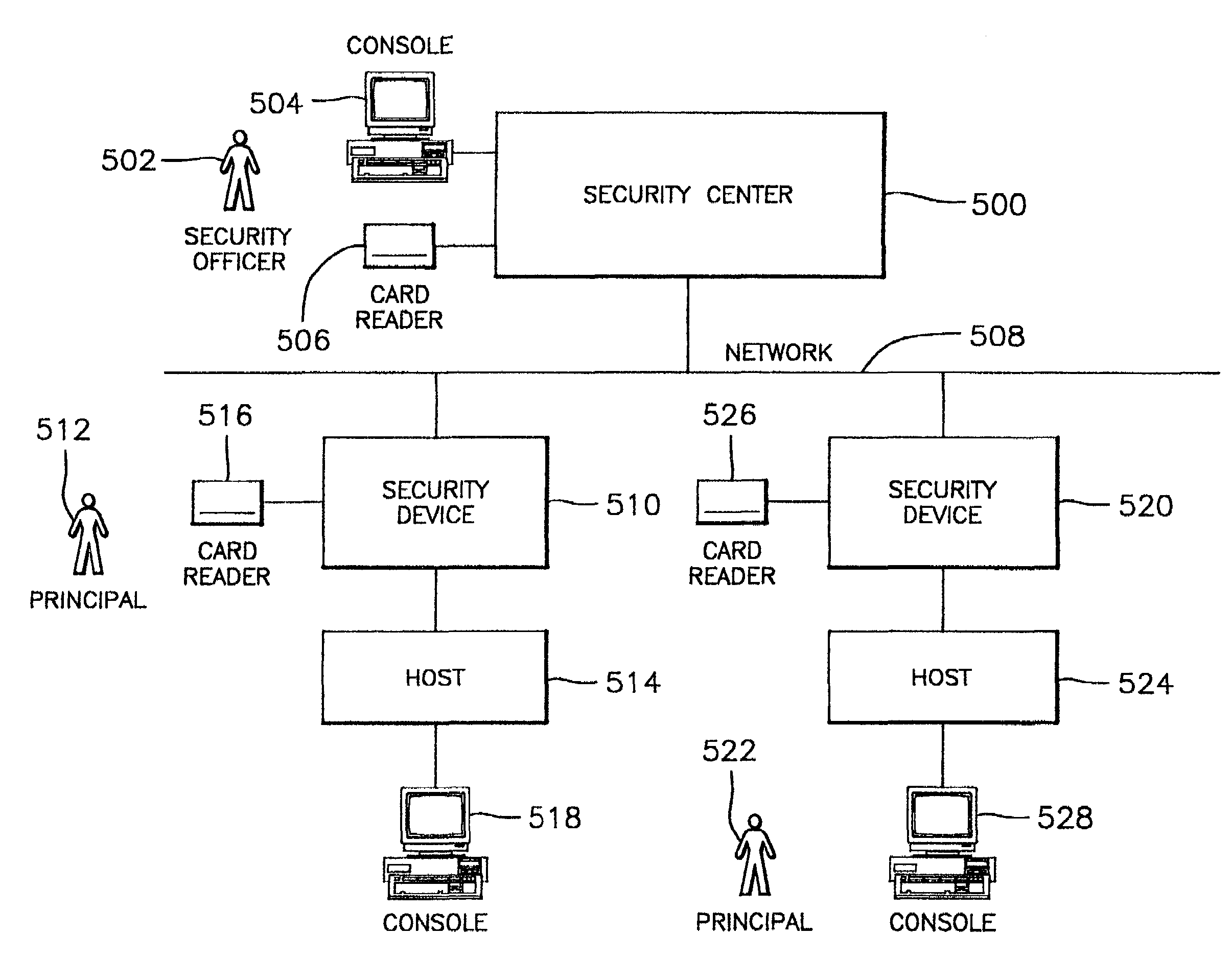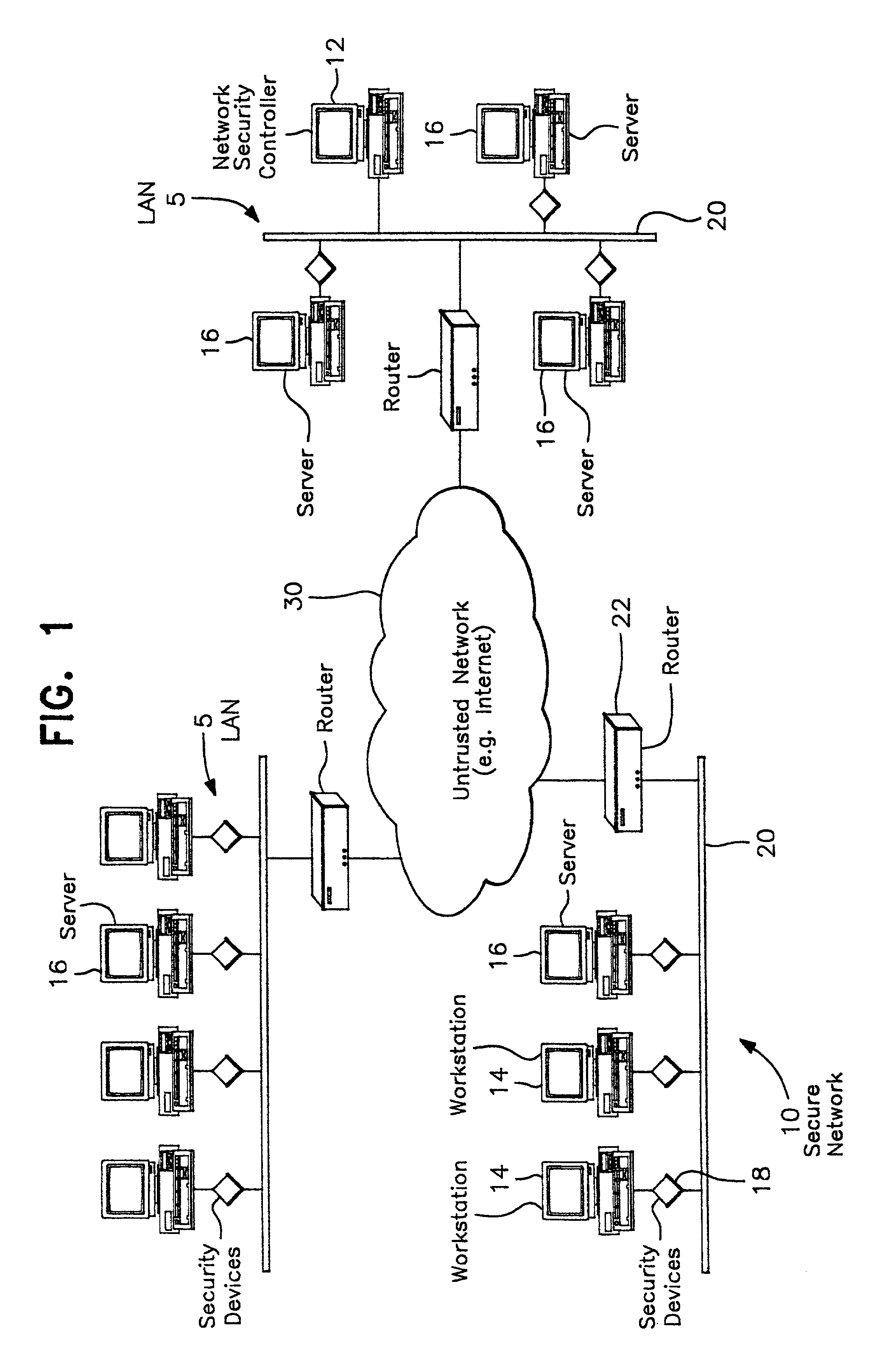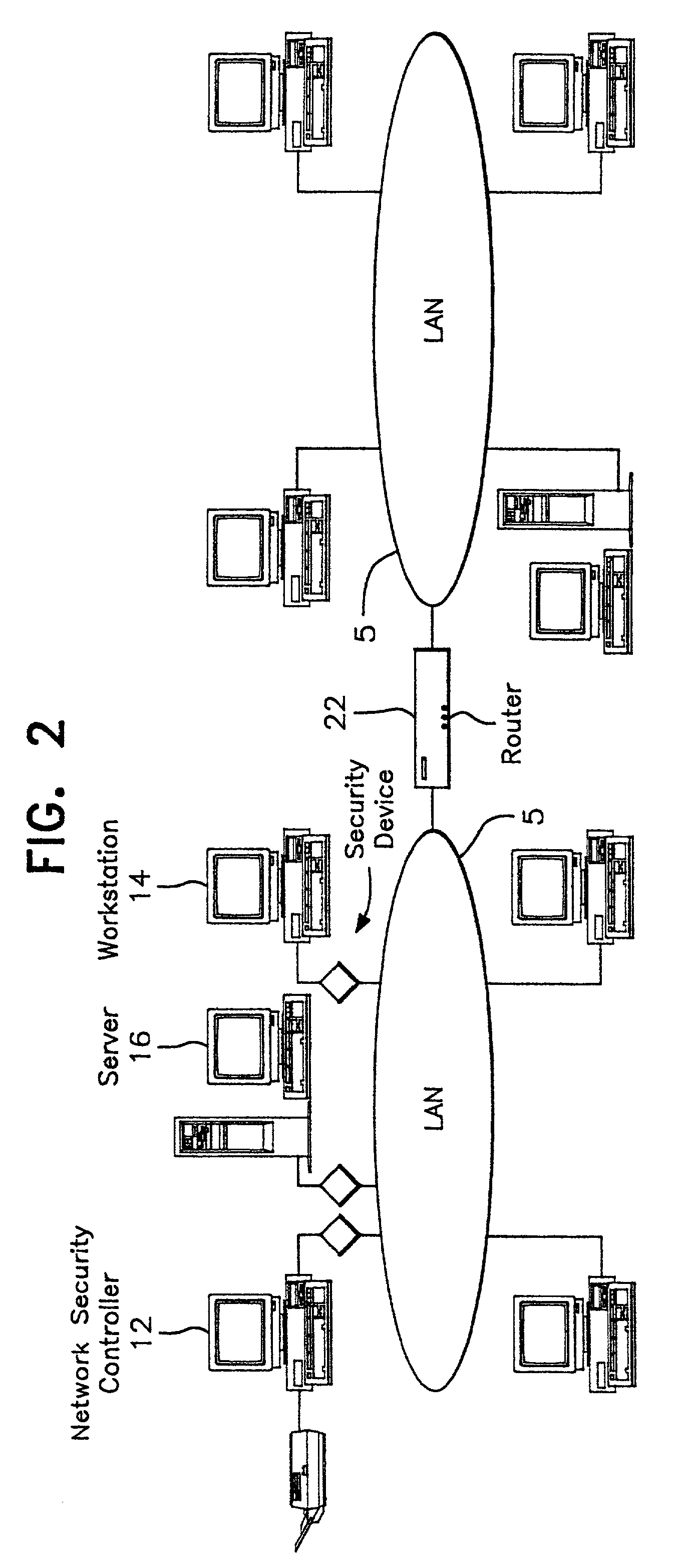Multi-level security network system
a security network and multi-level technology, applied in the field of multi-level security network systems, can solve the problems of inability to use an open network, lack of encryption, limited security mechanisms of local area networks, etc., and achieve the effect of ensuring confidentiality and integrity of host-to-host communications
- Summary
- Abstract
- Description
- Claims
- Application Information
AI Technical Summary
Benefits of technology
Problems solved by technology
Method used
Image
Examples
example embodiment
[0215]Turning to FIG. 14, an example of a local area network 10 is shown connected to a network 30. The LAN 10 comprises a first VPN 80, and a second VPN 82. The VPNs 80, 82, are established by a security officer that sets up permitted associations between hosts based on IP addresses. The VPNs are collections of host IP addresses that are permitted to communicate. Hosts on the second VPN 82 are invisible to hosts which are not directly addressable. This centralized configuration of secure VPNs is enforced by the respective security devices 18 of each host.
[0216]In the example set forth in FIG. 14, working from the left of the page, a first host 86 is configured to operate on both the first and second VPNs 80, 82. The third and fourth hosts, 90, 92, only have the ability to operate on either the first VPN 80 or the second VPN 82, respectively, but cannot access both VPNs. This is merely a matter of defining the IP associations permitted for this host.
[0217]The second host 88 has a se...
PUM
 Login to View More
Login to View More Abstract
Description
Claims
Application Information
 Login to View More
Login to View More - R&D
- Intellectual Property
- Life Sciences
- Materials
- Tech Scout
- Unparalleled Data Quality
- Higher Quality Content
- 60% Fewer Hallucinations
Browse by: Latest US Patents, China's latest patents, Technical Efficacy Thesaurus, Application Domain, Technology Topic, Popular Technical Reports.
© 2025 PatSnap. All rights reserved.Legal|Privacy policy|Modern Slavery Act Transparency Statement|Sitemap|About US| Contact US: help@patsnap.com



